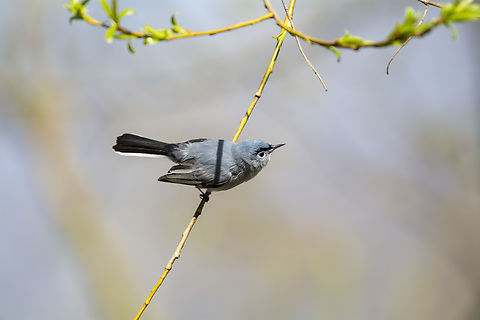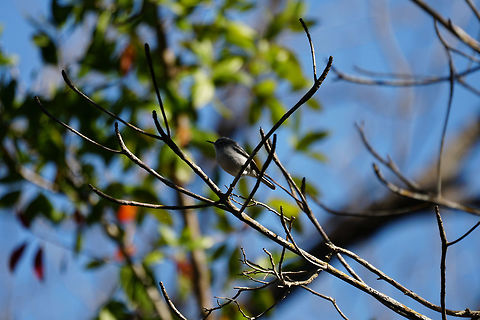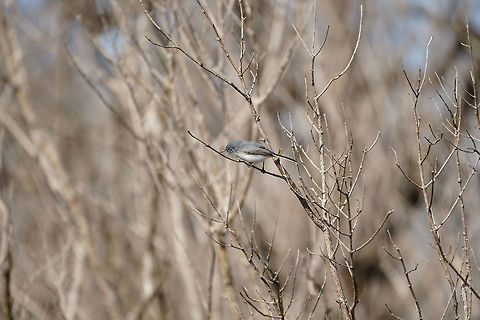
Appearance
This gnatcatcher species measures 10–13 cm and weighs only 5–7 g. Adult males are blue-grey on the upperparts with white underparts and have a long slender bill, long black tail and an angry black unibrow. Females are less blue without the unibrow. Both sexes have a white eye ring.
Habitat
The gnatcatcher species are common and are increasing in number while expanding to the northeast. They build a cup nest similar in construction to a hummingbird nest on a horizontal tree branch. The incubation period is 13 days for both sexes. Both parents construct the nest and feed the young; they may raise two broods in a season.These birds migrate to the southern United States, Mexico, northern Central America-, Cuba, Bahamas, Turks and Caicos Islands, and the Cayman Islands.

Food
They forage actively in trees or shrubs, mainly eating insects, insect eggs and spiders. They may hover over foliage, or fly to catch insects in flight.The tail is often held upright while defending territory or searching for food.
References:
Some text fragments are auto parsed from Wikipedia.